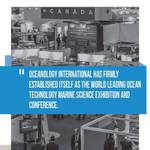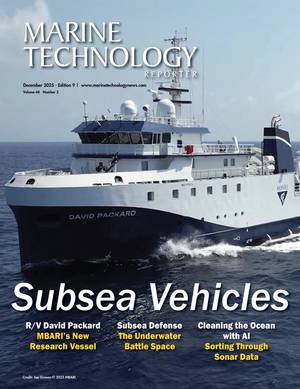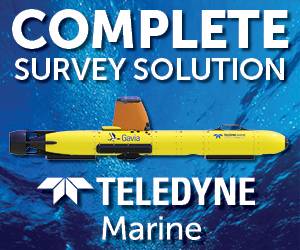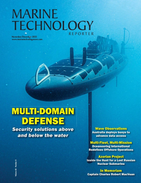Offshore Oil and Gas Companies
Planning the exploitation of offshore oil and gas fields
When oil and gas fields are uncovered and they seem to be profitable investments, companies need to figure out the best means to extract these resources. The planning must be carefully done and this period might last even longer than the extraction process itself (8 to 20 years). Everything must be taken into account, from types of platforms, vessels and equipment best suited for the given conditions, water depth and size of reserves. Then a means of transporting petroleum to the shore needs to be developed. Moreover, planners need to decide on where the resources will be processed and how they will be transported to market.
The details regarding host facilities must also be planned. The resources of oil and gas extracted from wells will be brought to surface on a host facility. The size and nature of this facility depends on many factors, such as location, depth of the water, the climate and so on. Other variables matter too, like environmental and safety considerations, stakeholders and financial possibilities.
The impact of hazardous environmental factors on offshore oil and gas activities
When offshore oil and gas platforms are situated in areas affected by hurricanes, they have to withstand extreme storms and resist for their maximum production life, thus their design is modified accordingly. The crew monitors the weather closely and they are always ready to prepare the evacuation of all equipments and shut down production whenever needed. Such platforms can be seen in the North Sea, off the UK coast, or in the Gulf of Mexico.
Other platforms in Alaska’s Cook Inlet, Russia’s Sakhalin Island and California are subjected to strong seismic activities and they must resist ground movements, while those in the Cook Inlet are designed to resist ice impact and face the motion of currents and tides.
Types of offshore oil and gas platforms
There are two types of platforms – bottom supported (or fixed platforms) and floating rigs (mobile platforms).
Fixed platforms are divided into more categories as well. Gravel islands can be used all year long at maximum depths of 50 feet undersea and they are able to support heavy offshore oil and gas equipment. They are utilized throughout the exploitation activities, then left to be naturally eroded by environmental factors when these activities stop. When built in cold regions, they are strengthened with steel, rocks or concrete so they can resist ice damage.
Steel jackets are platforms made of large pipe legs with tubular steel cross bracing, supported by piles into the ocean floor so they can withstand hazardous conditions. Steel jackets are built in shallow and medium waters, and they are meant for long-term use. They can be functional up to 1,400 feet deep and they’re hurricane resistant.
Gravity-based structures (GBS) are large and with a heavy mass. They can provide support for facilities up to 1,000 feet deep; they resist arctic conditions and even icebergs.
Compliant towers function in deepwater, up to 3,000 feet. They are slender and flexible, and successfully resist the constant impact of small waves.
Floating rigs encompass seven different types of mobile platforms. TLPs (tension leg platforms) are similar to fixed platforms, but they use a tethered floating hull connected to the ocean floor and they can function in 6,000 feet deep waters.
Semi-submersibles are made of a deck supported by four columns, connected undersea by pontoons. They are very similar to TLPs, but unlike them their floating hull uses a mooring system of steel cables that keep the platform in position and these cables are connected to underwater wells through flowlines.
Spars are also moored to the ocean floor, but they use another anchoring system. They function in waters as deep as 10,000 feet.
FPSOs (floating production storage and offloading units) also operate as deep as 10,000 feet, in milder climates, or wherever there is a short pipeline system of oil transportation. They have a large capacity of storage.
MODUs (mobile offshore drilling units) do not involve the use of platforms. They have no equipment for processing, and they are highly mobile when the drilling is over.
Subsea production systems are made of flowlines lying on the seafloor, wells and manifolds. These wells can be connected to Spars, FPSOs or other platforms connecting them to nearby reservoirs.
Drilling in offshore oil and gas activities
Production wells were invented by the Chinese in the forth century; the first wells had an 800 feet depth and were very resistant to high temperatures and pressures. Nowadays wells can last up to 50 years, with proper inspection and maintenance work. The reservoirs are constantly modified to support new production levels.
Conventional drilling used hole-boring drills pressed against the seafloor and rotated and the dislocated rocks were brought up to that the drill could move deeper. Today, directional drilling is applied and horizontal drilling has replaced the traditional techniques. Being able to drill horizontally, the operator can reach other reservoirs from one single drilling rig, thus maximize the exploitation.
Products resulting from offshore oil and gas activities
The product extracted from undersea reservoirs is crude oil. This collocation depicts the oil that has not been yet processed or refined into end products – gasoline, butane, propane, asphalt, jet fuel, diesel, and heating oil. Crude oil contains many impurities, such as gas, sediment or water and they must be removed before the oil is transported to market.
Offshore oil and gas production consists of two phases – extraction and processing. In the extraction phase, the crude oil travels from the reservoir to the water surface because of the natural drive. When pressures in the reservoirs are low, operators resort to artificial lifts, with the aid of in-well or seafloor pumps. Processing starts once the crude oil has reached the ocean surface. Here, it will be divided into its basic components, dehydrated in an oil treater and then sent to storage, exported through a pipeline or a shuttle tanker to an oil refinery. The resulting gas follows the same trajectory.













 December 2025
December 2025



